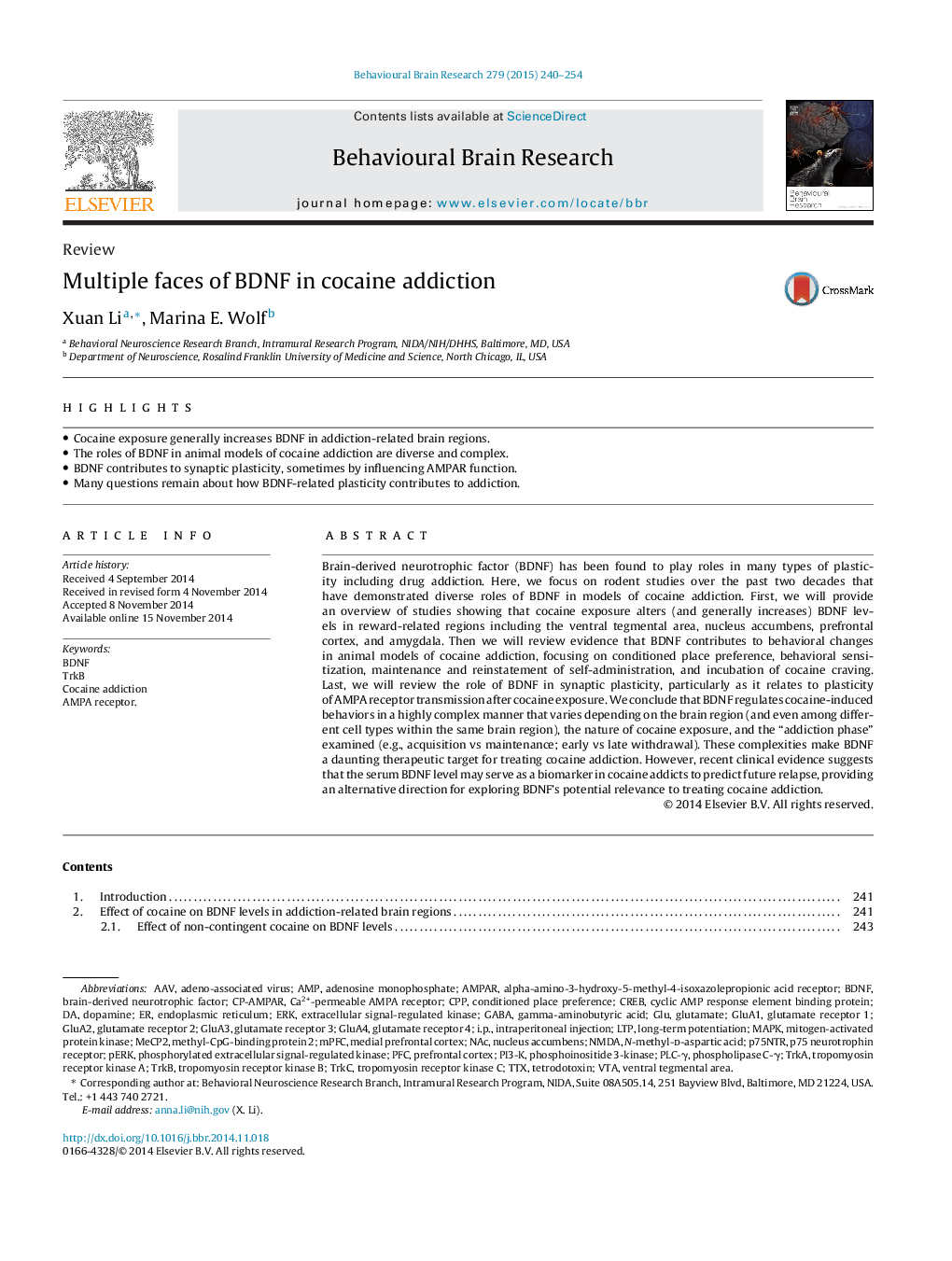| کد مقاله | کد نشریه | سال انتشار | مقاله انگلیسی | نسخه تمام متن |
|---|---|---|---|---|
| 6257310 | 1612953 | 2015 | 15 صفحه PDF | دانلود رایگان |

- Cocaine exposure generally increases BDNF in addiction-related brain regions.
- The roles of BDNF in animal models of cocaine addiction are diverse and complex.
- BDNF contributes to synaptic plasticity, sometimes by influencing AMPAR function.
- Many questions remain about how BDNF-related plasticity contributes to addiction.
Brain-derived neurotrophic factor (BDNF) has been found to play roles in many types of plasticity including drug addiction. Here, we focus on rodent studies over the past two decades that have demonstrated diverse roles of BDNF in models of cocaine addiction. First, we will provide an overview of studies showing that cocaine exposure alters (and generally increases) BDNF levels in reward-related regions including the ventral tegmental area, nucleus accumbens, prefrontal cortex, and amygdala. Then we will review evidence that BDNF contributes to behavioral changes in animal models of cocaine addiction, focusing on conditioned place preference, behavioral sensitization, maintenance and reinstatement of self-administration, and incubation of cocaine craving. Last, we will review the role of BDNF in synaptic plasticity, particularly as it relates to plasticity of AMPA receptor transmission after cocaine exposure. We conclude that BDNF regulates cocaine-induced behaviors in a highly complex manner that varies depending on the brain region (and even among different cell types within the same brain region), the nature of cocaine exposure, and the “addiction phase” examined (e.g., acquisition vs maintenance; early vs late withdrawal). These complexities make BDNF a daunting therapeutic target for treating cocaine addiction. However, recent clinical evidence suggests that the serum BDNF level may serve as a biomarker in cocaine addicts to predict future relapse, providing an alternative direction for exploring BDNF's potential relevance to treating cocaine addiction.
Journal: Behavioural Brain Research - Volume 279, 15 February 2015, Pages 240-254